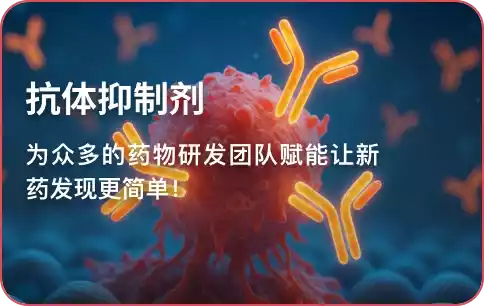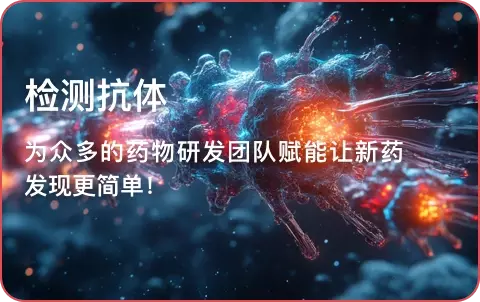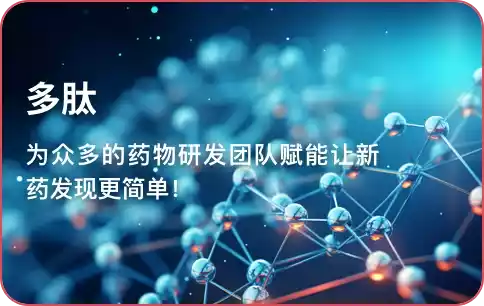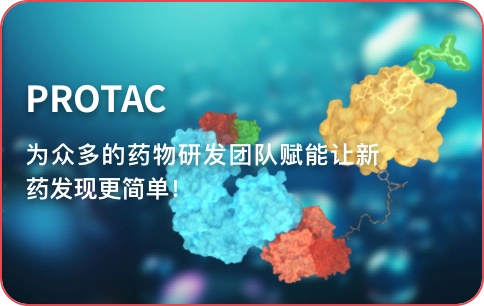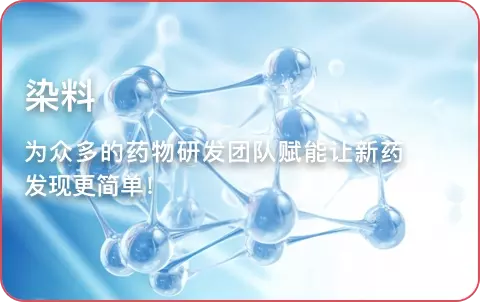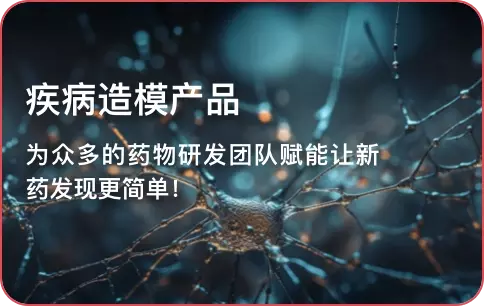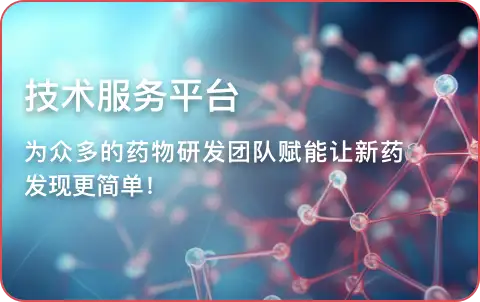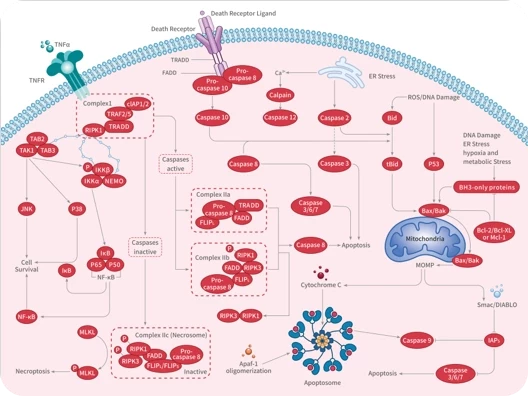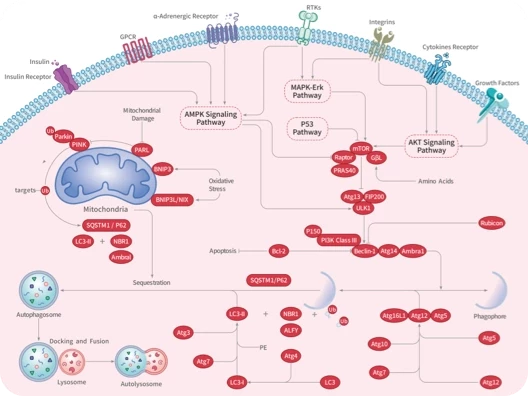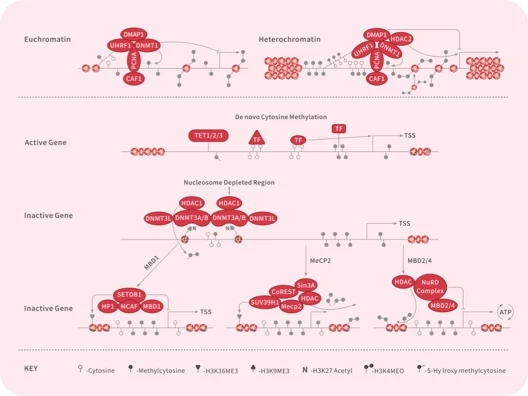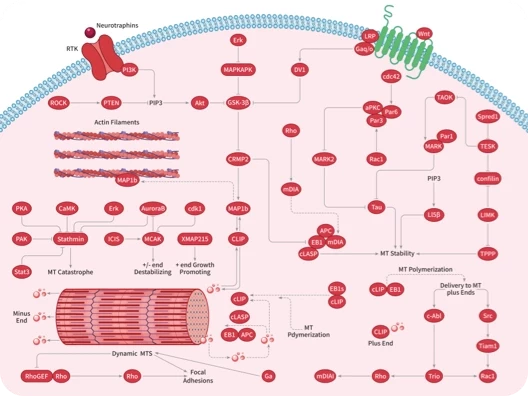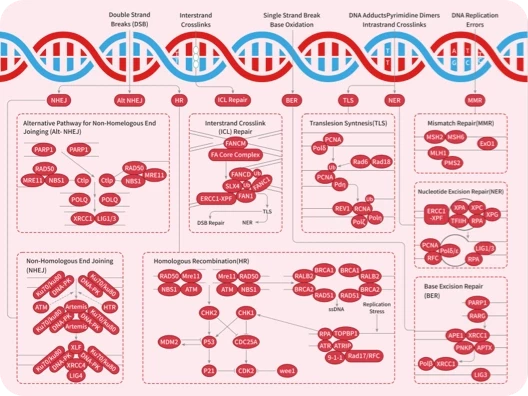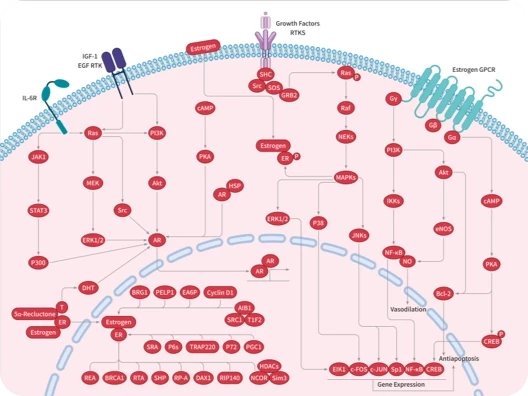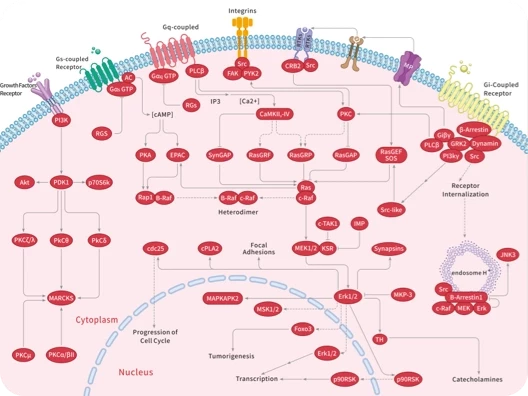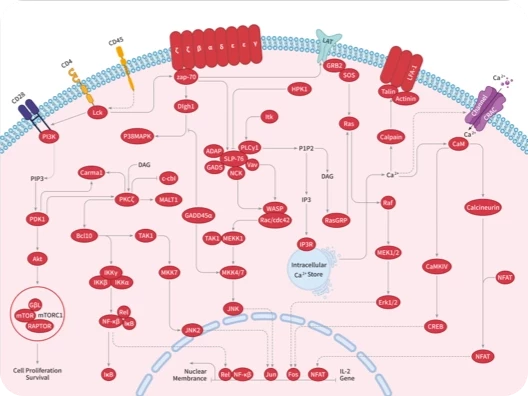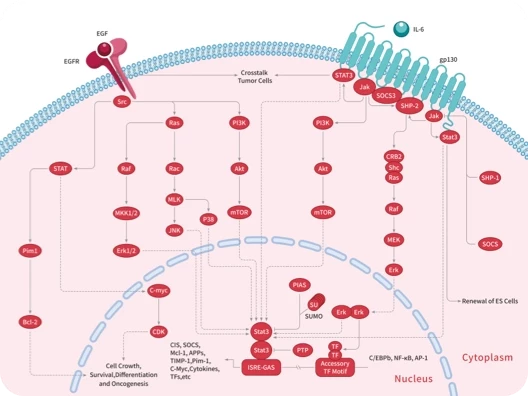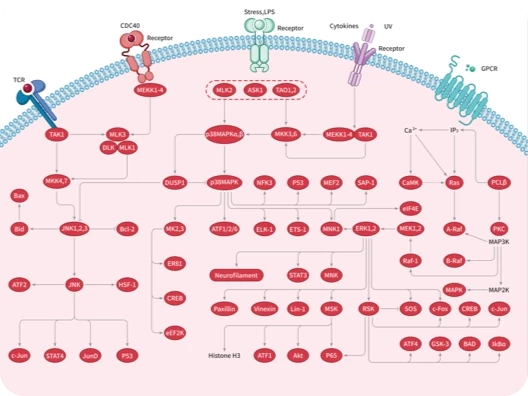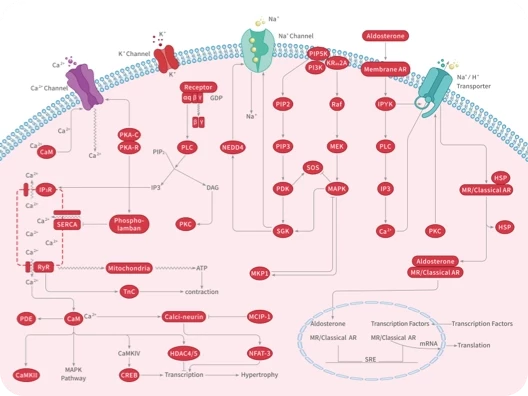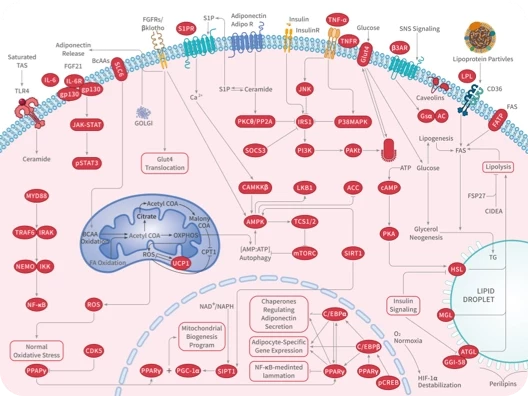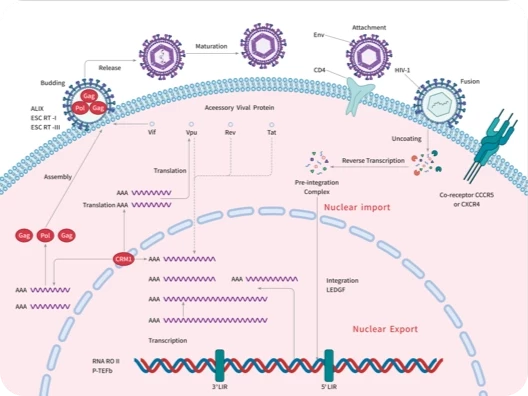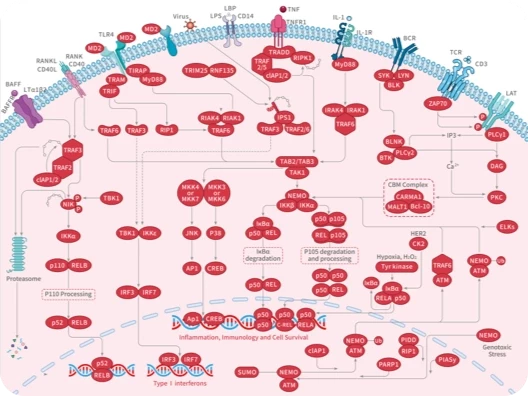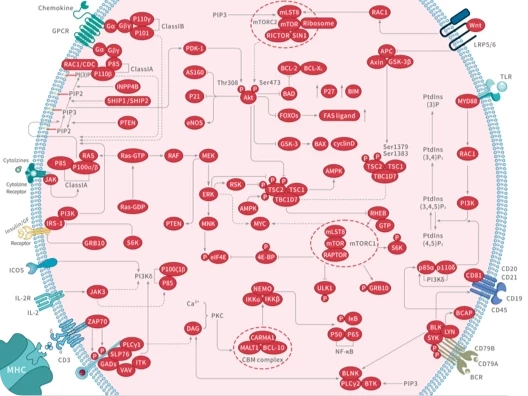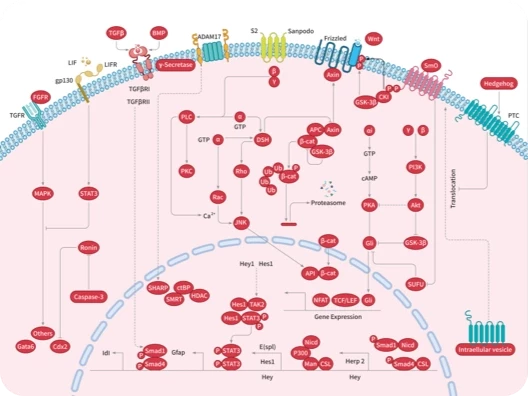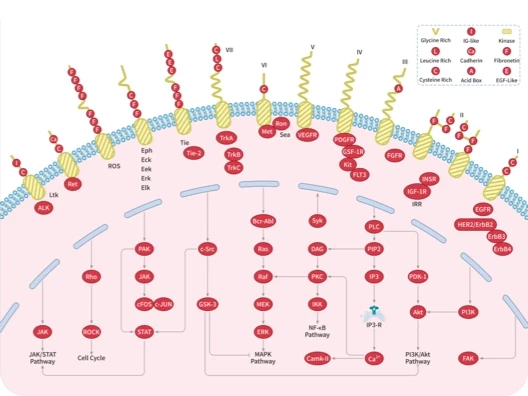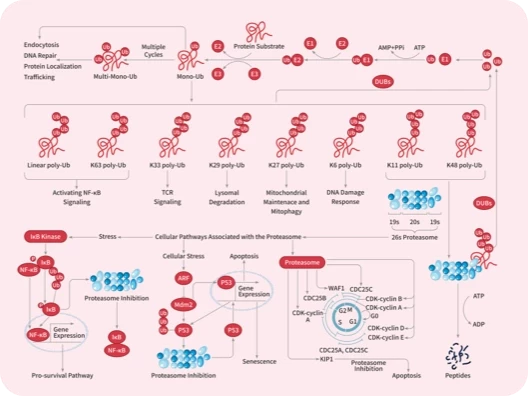- 全部删除
 您的购物车当前为空
您的购物车当前为空
ADK Protein, Human, Recombinant (His & GST)
Adenosine kinase(ADK) belongs to the family of transferases. Adenosine kinase (ADK) is the key enzyme in adenosine metabolism and catalyzes ATP and adenosine into two products: ADP and AMP. Two isoforms of the enzyme adenosine kinase (ADK), which differ at their N-terminal ends, are found in mammalian cells. It has been shown that the two ADK isoforms differ only in their first exons and the promoter regions; hence they arise via differential splicing of their first exons with the other exons common to both isoforms. In adult brain, ADK is primarily present in astrocytes. Several lines of experimental evidence support a critical role of ADK in different types of brain injury associated with astrogliosis, which is also a prominent morphologic feature of temporal lobe epilepsy (TLE). It has been suggested that dysregulation of ADK in astrocytes is a common pathologic hallmark of TLE. Moreover, in vitro data suggest the existence of an additional layer of modulatory crosstalk between the astrocyte-based adenosine cycle and inflammation. ADK also contributes to CK homeostasis in vivo.
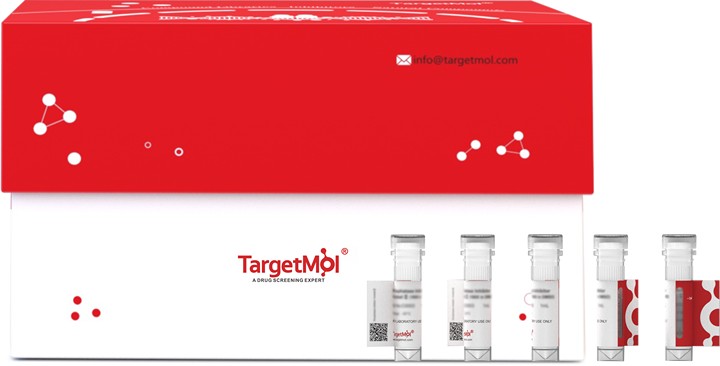
ADK Protein, Human, Recombinant (His & GST)
| 规格 | 价格 | 库存 | 数量 |
|---|---|---|---|
| 50 μg | ¥ 2,530 | 5日内发货 |
产品信息
| 生物活性 | Kinase activity untested |
| 产品描述 | Adenosine kinase(ADK) belongs to the family of transferases. Adenosine kinase (ADK) is the key enzyme in adenosine metabolism and catalyzes ATP and adenosine into two products: ADP and AMP. Two isoforms of the enzyme adenosine kinase (ADK), which differ at their N-terminal ends, are found in mammalian cells. It has been shown that the two ADK isoforms differ only in their first exons and the promoter regions; hence they arise via differential splicing of their first exons with the other exons common to both isoforms. In adult brain, ADK is primarily present in astrocytes. Several lines of experimental evidence support a critical role of ADK in different types of brain injury associated with astrogliosis, which is also a prominent morphologic feature of temporal lobe epilepsy (TLE). It has been suggested that dysregulation of ADK in astrocytes is a common pathologic hallmark of TLE. Moreover, in vitro data suggest the existence of an additional layer of modulatory crosstalk between the astrocyte-based adenosine cycle and inflammation. ADK also contributes to CK homeostasis in vivo. |
| 种属 | Human |
| 表达系统 | Baculovirus Insect Cells |
| 标签 | His, GST |
| 蛋白编号 | AAH03568.1 |
| 别名 | AK,adenosine kinase |
| 蛋白构建 | A DNA sequence encoding the human ADK isoform short (AAH03568.1) (Met 1-His 345) was fused with the N-terminal polyhistidine-tagged GST tag at the N-terminus. Predicted N terminal: Met |
| 蛋白纯度 | > 90 % as determined by SDS-PAGE |
| 分子量 | 68 kDa (predicted); 60 kDa (reducing conditions) |
| 内毒素 | < 1.0 EU/μg of the protein as determined by the LAL method. |
| 缓冲液 | Supplied as sterile 50 mM Tris, 100 mM NaCl, pH 8.0, 10% gly, 0.3 mM DTT. |
| 复溶方法 | A Certificate of Analysis (CoA) containing reconstitution instructions is included with the products. Please refer to the CoA for detailed information. |
| 存储 | It is recommended to store the product under sterile conditions at -20°C to -80°C. Samples are stable for up to 12 months. Please avoid multiple freeze-thaw cycles and store products in aliquots. |
| 运输方式 | Kinases are highly recommended to be shipped at frozen temperature with blue ice or dry ice. |
| 研究背景 | Adenosine kinase(ADK) belongs to the family of transferases. Adenosine kinase (ADK) is the key enzyme in adenosine metabolism and catalyzes ATP and adenosine into two products: ADP and AMP. Two isoforms of the enzyme adenosine kinase (ADK), which differ at their N-terminal ends, are found in mammalian cells. It has been shown that the two ADK isoforms differ only in their first exons and the promoter regions; hence they arise via differential splicing of their first exons with the other exons common to both isoforms. In adult brain, ADK is primarily present in astrocytes. Several lines of experimental evidence support a critical role of ADK in different types of brain injury associated with astrogliosis, which is also a prominent morphologic feature of temporal lobe epilepsy (TLE). It has been suggested that dysregulation of ADK in astrocytes is a common pathologic hallmark of TLE. Moreover, in vitro data suggest the existence of an additional layer of modulatory crosstalk between the astrocyte-based adenosine cycle and inflammation. ADK also contributes to CK homeostasis in vivo. |







